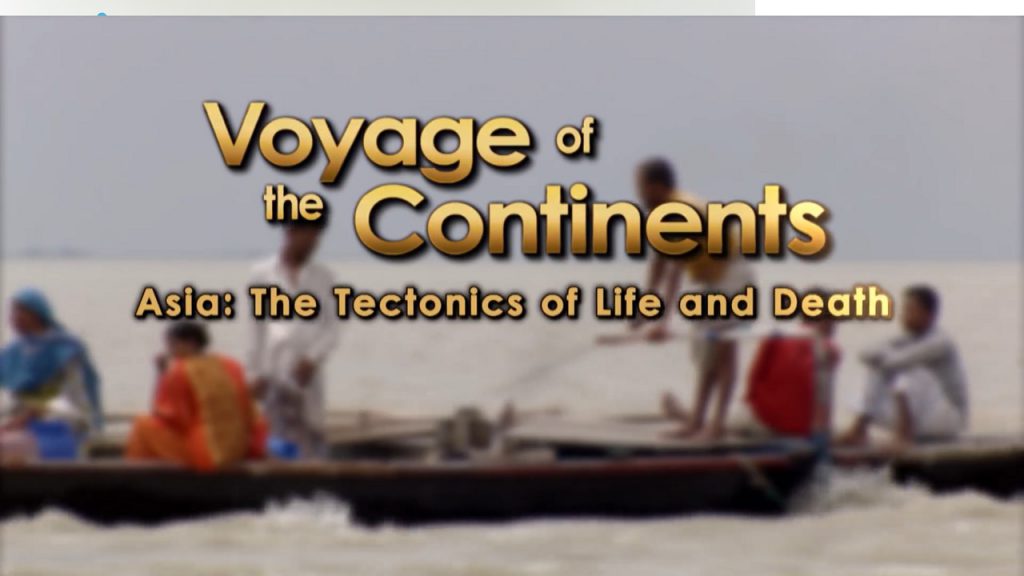Voyage of the Continents episode 2: The history of Asia is awash with superlatives. Along with teams of scientists, we discover the incredible volcanic phenomenon that caused the greatest extinction of all time. Asia was the theatre of the world’s most violent tectonic collision, and has witnessed the birth of the Earth’s highest summits. Today, one of the countries of Asia – which is the world’s most densely populated continent – could be swallowed up, in the ceaseless Voyage of the Continents. Remote Siberia is where Asia was born. A cold and distant land that has seen billions of years of volcanic activity. In this episode we see evidence of the greatest destruction of life in the history of the Earth. And we follow Siberia as it wanders the Earth’s surface eventually joining with other land masses to form our planet’s largest continent.
Over the many billions of years of Earth’s history, our planet has never stopped changing. Massive tectonic forces have sculpted and resculpted our world in a never-ending journey. Do you know that Scandinavia was once in the southern hemisphere? And that in the Ardennes we can find coral reefs like in the Bahamas? Or that the largest ocean in the world, the Pacific is endangered? Since its formation 4.6 billion years ago, our Earth has been subjected to forces of incredible power. Around a still hot core, the earth’s crust, driven by mantle convection movements, is in perpetual evolution, tirelessly redrawing the map of the continents and oceans.
As landmasses assemble and separate, they fuel volcanoes and spark earthquakes, building mountains and tearing valleys. They come together or separate on average by a few millimeters or centimeters per year, sometimes more. On the scale of geological time, they shape the reliefs and deep architecture of the continents. We see the Earth, eons in the making, through the eyes of geologists and other scientists.
The history of these continents is part of a “tectonic waltz” of land and sea, a concept as important for the history of the Earth as Darwin’s theory of species for the evolution of Man. Tectonics have created life– and destroyed it as well. Huge volcanoes and devastating earthquakes continue to dominate human history. This is a story of high drama and intense beauty, the interaction of geology and life. A true Voyage of the Continents.
Voyage of the Continents episode 2
Asia is a continent of vast diversity, from its people and cultures to its geology and natural resources. One of the most fascinating aspects of this region is its tectonic activity. The movements of tectonic plates have shaped Asia’s landscape over millions of years, giving rise to towering mountain ranges, vast deserts, and fertile river valleys. However, these same forces have also led to devastating earthquakes, volcanic eruptions, and tsunamis that have claimed countless lives throughout history.
The tectonic activity in Asia is driven by the collision of several tectonic plates. The Indian Plate, for example, is moving northward and colliding with the Eurasian Plate, which has led to the formation of the Himalayan mountain range. The collision of these two plates has resulted in the highest peaks on earth, including Mount Everest, K2, and Kangchenjunga.
But the tectonic activity in Asia is not limited to the Himalayas. The region is also home to the Pacific Ring of Fire, a zone of intense seismic and volcanic activity that circles the Pacific Ocean. In Asia, this zone includes countries such as Japan, the Philippines, and Indonesia, which are prone to earthquakes, volcanic eruptions, and tsunamis. These natural disasters have had devastating effects on the region, claiming countless lives and causing extensive damage to infrastructure.
Despite the dangers posed by tectonic activity, the geological features of Asia also provide immense benefits to the people who live there. The region is rich in mineral resources such as coal, oil, and natural gas, which are crucial to the economies of countries like China and India. The fertile river valleys, such as the Ganges and Yangtze, have supported the growth of civilizations for thousands of years, providing water for irrigation, transportation, and food production.
The tectonic activity of Asia is both a blessing and a curse. While it has shaped the region’s landscape and provided valuable resources, it has also led to devastating natural disasters that have claimed countless lives. As we continue to study the tectonics of Asia, we must also work to mitigate the risks posed by earthquakes, volcanic eruptions, and tsunamis, and ensure the safety and well-being of the people who call this diverse and fascinating region home.




